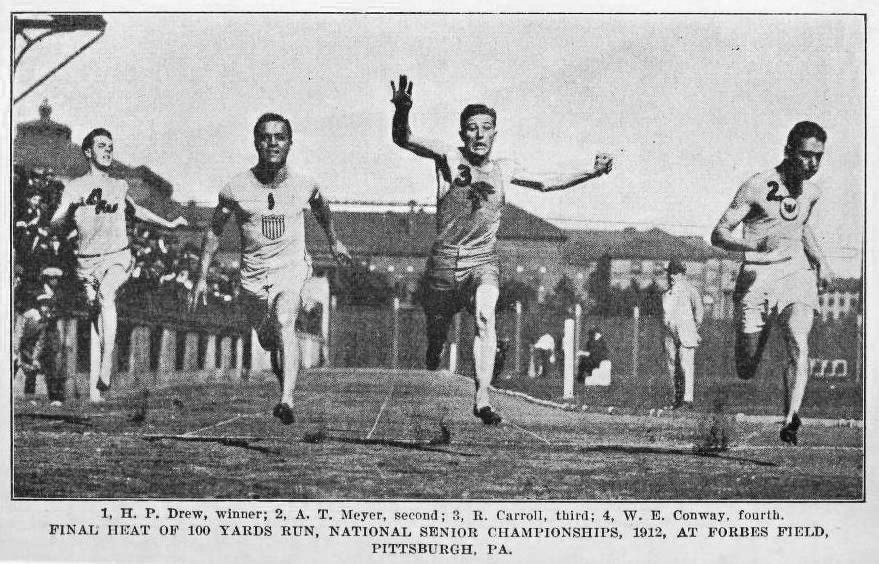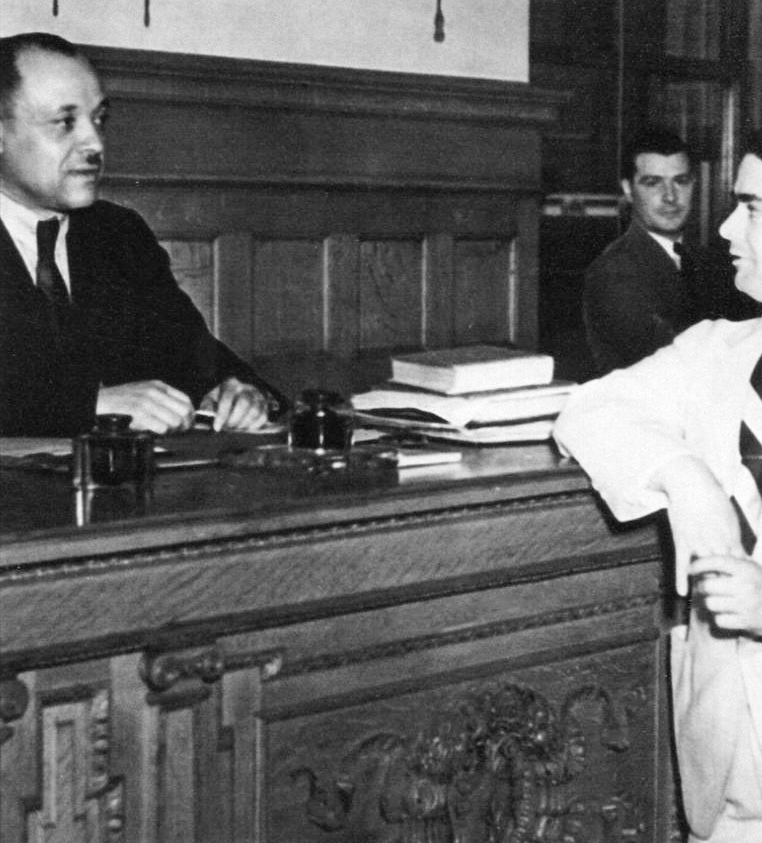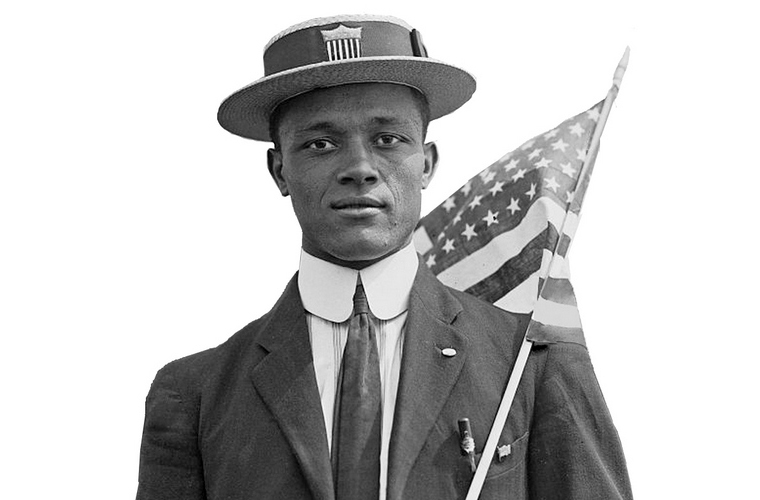Howard P. Drew, schoolboy Olympian, original “World’s Fastest Human,” scholar, soldier, lawyer, and first African American judge in Connecticut, was born to David and May Drew in Lexington, Virginia on June 28, 1890. Not wanting their child to be raised in the Jim Crow South, the Drew family moved to New York City in 1895 and arrived in Springfield, Massachusetts in 1904.
Drew entered Springfield High School in 1906 but dropped out his freshman year to work as a bellhop to help support his family. He re-entered high school in 1910. By the time he was a high school Junior he was considered one of the fastest sprinters in the country. At the U.S. Olympic Trials at Harvard University on June 8, 1912, Drew not only beat the fastest American of the time, Ralph Craig, but he also tied the World Record in the 100-meter dash.
 At the 1912 Stockholm Olympics Drew decided to go for a record in the 100-meter semi-final but he stepped into a soft spot on the track and his left leg gave out. Nonetheless, he managed to hop across the finish line in first place. No amount of therapy could get Drew ready for the finals. He was told he risked permanent injury, so with great disappointment, he watched teammate Ralph Craig win both the 100 and 200-meter races knowing he would have easily won had he not been injured. Drew did play on the U.S. Olympic baseball team, sharing left-field responsibilities with teammate Jim Thorpe.
At the 1912 Stockholm Olympics Drew decided to go for a record in the 100-meter semi-final but he stepped into a soft spot on the track and his left leg gave out. Nonetheless, he managed to hop across the finish line in first place. No amount of therapy could get Drew ready for the finals. He was told he risked permanent injury, so with great disappointment, he watched teammate Ralph Craig win both the 100 and 200-meter races knowing he would have easily won had he not been injured. Drew did play on the U.S. Olympic baseball team, sharing left-field responsibilities with teammate Jim Thorpe.
Fate stepped in one more time to deny Howard Drew his chance for Olympic glory. The 1916 Olympics were canceled due to World War I. Drew was the star of the “Pershing Olympics” held in France for the Allied Forces but by the time tryouts for the 1920 USA track team came, Drew, now in his thirties, was unable to make the team.

Drew attended college at the University of Southern California and during his college days, between 1913 and 1916, he tied or set every World Record in the dash from 30 to 250 yards. The press called him the “Negro Speed Marvel, Colored Flyer, and Crack Colored Sprinter” but the title that was first given to Drew before anyone else and still used to this day was “World’s Fastest Man.”
Notably, while in high school, Drew refused invitations to run at Boston Athletic Association track meets because they posted a notice that “no Negro would ever represent the association.” Drew graced the cover of the NAACP’s July 1915 Crisis magazine – the special “Education Number.” He wrote newspaper articles on civil rights, fitness, and education. Drew later studied law at Drake University and moved to Hartford, Connecticut to practice law. In 1924, he was elected Justice of the Peace and in 1928, he was appointed a night court judge in the city and thus became the first black judge in that state.
Howard P. Drew died on Feb. 19, 1957, at the U.S. Veterans Hospital in West Haven, Connecticut.

